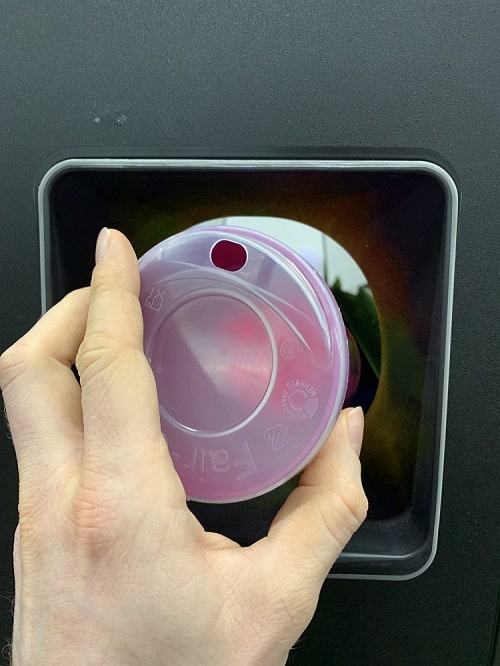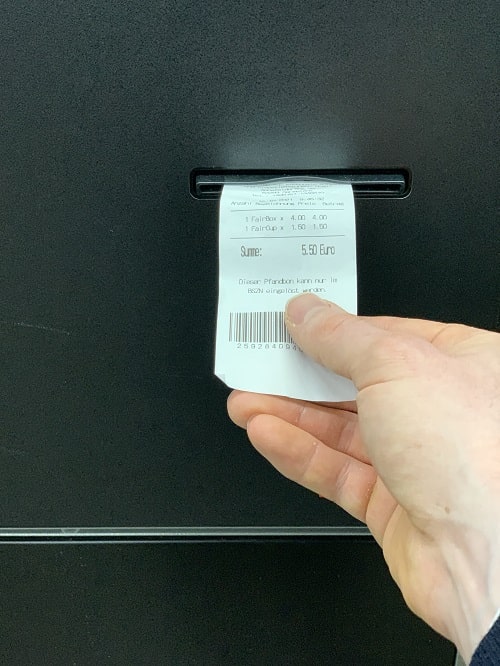The role of reverse vending machines for reusable systems
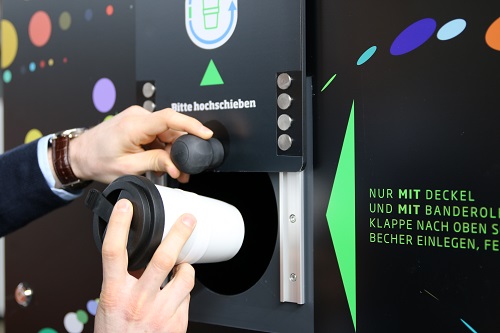
Approaches to waste avoidance
According to a survey by the Gesellschaft für Verpackungsmarktforschung (Society for Packaging Market Research), more than 346,000 tonnes of waste were produced in Germany in 2017 for disposable tableware and to-go packaging. The German government is therefore increasingly tightening its measures to avoid disposable packaging – among other reforms, by amending the Packaging Act.
A ban on the sale of single-use plastic products such as straws or disposable tableware has already been in effect since this year. From 2023, all catering establishments must offer reusable containers as an alternative to disposable packaging for food and drinks. Because it is better for the environment to use packaging several times instead of disposing of it immediately after use. But what does an efficient reusable system actually look like and why do reverse vending machines play an important role in its implementation?
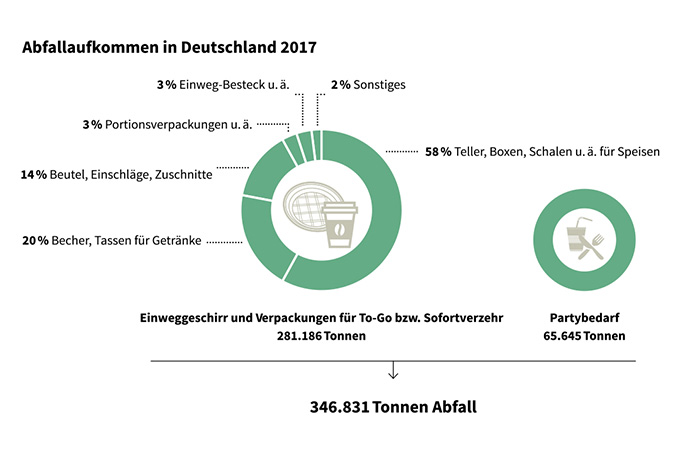
How does a reusable system work?
Reusable systems are a practical example of a circular economy. Instead of throwing away packaging materials after use, they should be reused in the sense of conserving resources and closing material cycles. It doesn’t matter whether it’s the reusable cup made of polypropylene or the reusable bottle made of glass – with each reuse, resources are saved that would otherwise have been spent on producing new packaging. This makes reusable systems real climate protectors.
For caterers, the introduction of reusable packaging requires that a contingent of reusable packaging (e.g. coffee-to-go cups or salad bowls) must be purchased in the first place. More and more manufacturers have positioned themselves on the market for this in recent years (e.g. FairCup or Recup in Germany). This reusable packaging must be collected after being used by the customer and then be rinsed.
In order to give customers an incentive to return their used packaging, a deposit is usually charged for it. The return of used cups or trays can either be done by the service and sales staff or by an reverse vending machine.
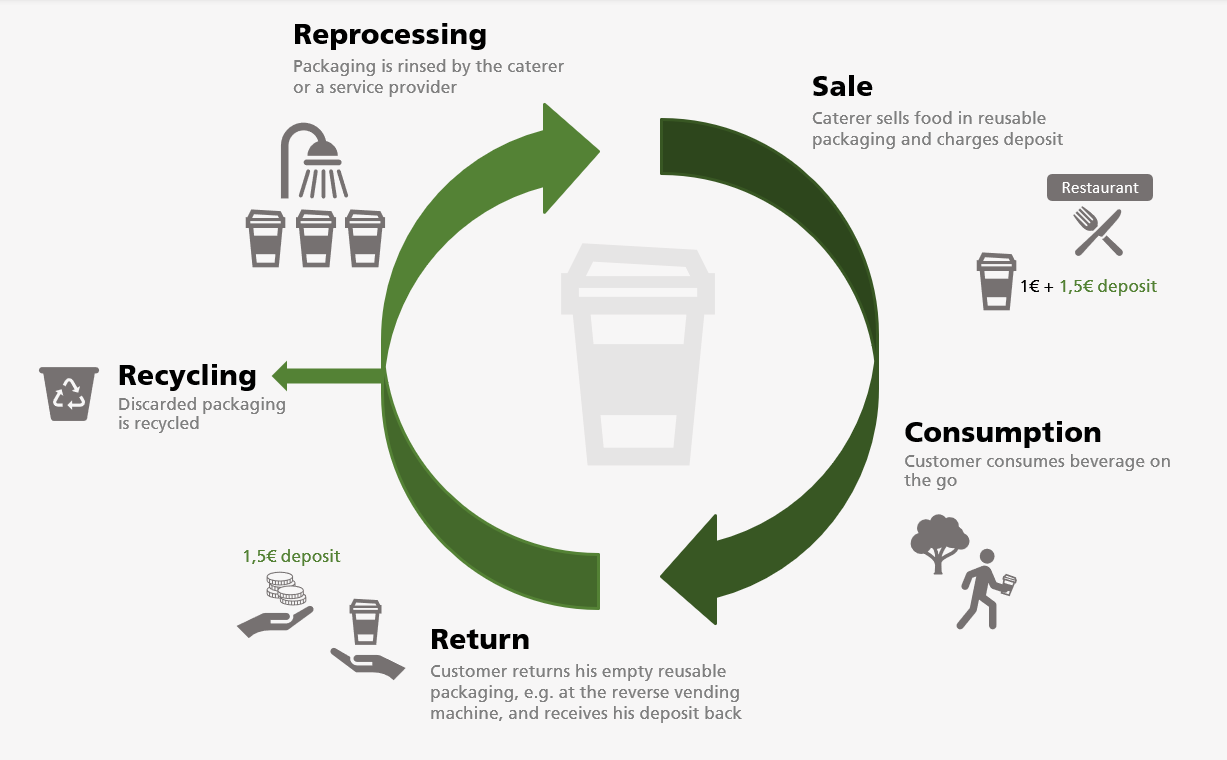
What is a reverse vending machine?
A reverse vending machine (RVM) is used for the fully automatic return of empty food packaging such as beverage containers or meal boxes. They can be set up anywhere where an automated return process is to relieve staff. They can also be used as additional return points in public places. Reverse vending machines must verify the packaging entered – ensuring that it is eligible for return – and then transport it to a collection bag. Afterwards the customer is paid the deposit value of the returned packaging by the machine. The deposit value and its distribution can vary depending on the area of application. Theoretically, a reverse vending machine can take back any type of packaging.
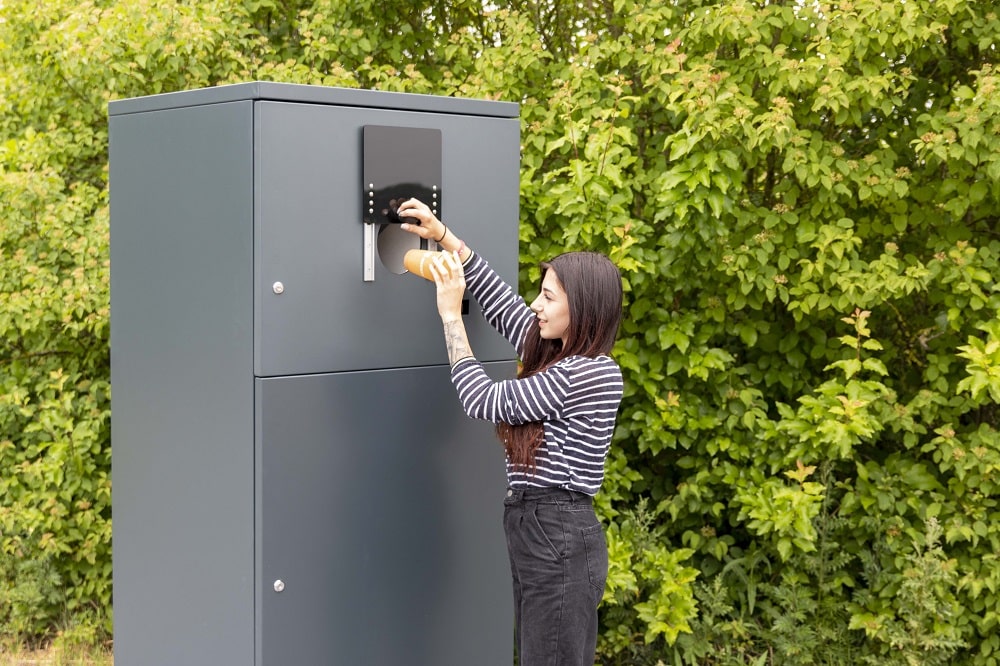
What are the advantages of a reverse vending machine for reusable systems?
Reusable systems inevitably go along with extra effort for all parties involved: consumers have to return used packaging and caterers have to collect and rinse it. If used cups or bowls are taken back at the regular point of sale, this can lead to longer queues and a retention of sales staff.
Not only do waiting times have a negative impact on customer satisfaction, they can also deter potential customers who, for example, just want to grab a coffee to go in a bakery. Moreover, for hygienic reasons, it is often not even allowed to take back used packaging at the same place where foods are served.
Reverse vending machines can relieve the sales staff and shift the return process away from the point of sale. Maintenance and emptying of the RVM can be carried out by the staff at any time. For customers, using the reverse vending machine is easy and less time-consuming, as there is no need to queue at the cash register.
Especially in Germany, most people are familiar with the use of reverse vending machines in supermarkets due to the one-way deposit return system introduced back in 2005. In addition, it is also possible to install RVMs in public spaces (e.g. at bus stops or train stations), so that additional return points for a nationwide reusable system are built. Because who wants to carry around their used reusable cup until the next visit to the place of purchase?! Automated return solutions therefore not only offer advantages for the caterer or restaurant, but also potentially contribute to a higher acceptance of the reusable system by the customer.
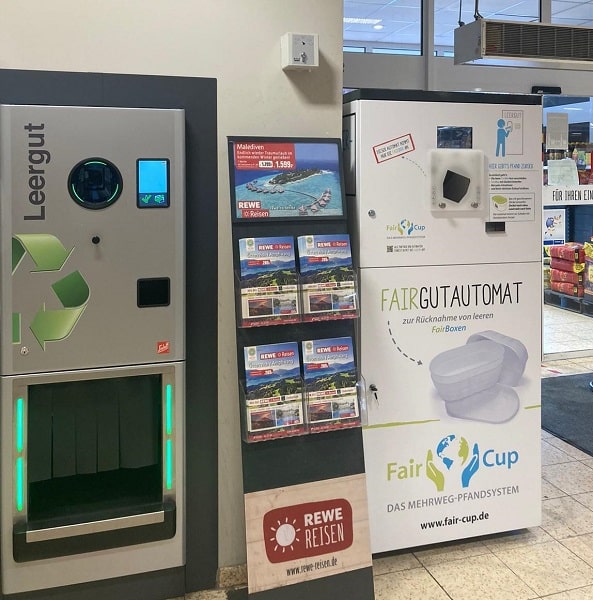
What are the challenges of a automated return process?
Reusable packaging in particular often has a high deposit value because it is significantly more expensive to produce than packaging made of disposable plastic. Although a high deposit value is more likely to encourage customers to return their containers, it also gives them a greater incentive for tampering.
Especially machines that are set up in public places without being monitored by the service staff are susceptible to manipulation attempts. These are usually aimed at illegally obtaining the value of the deposit. Therefore, it can make sense not to hand out the deposit as cash, but to credit a virtual discount in an app, for example. This could then be redeemed for a new package or any other purchase at one of the participating partner stores.
However, it is crucial that reverse vending machines can ensure that the deposit amount is only paid out for packaging that is subject to the deposit. Mistakenly or improperly inserted packaging or objects that are not accepted by the operator must be rejected by the machine accordingly. For this purpose, various methods of verifying the returned packaging are conceivable.
For reverse vending machines installed at public places, additional service and maintenance costs must also be taken into account. This is because the machines should be emptied and cleaned regularly. In addition, the collected packaging must be transported either back to the point of sale (e.g. the restaurant) or to a dishwashing service provider. When placing RVMs at central public junctions, it is also important to obtain installation permits from the responsible authorities and to observe any safety guidelines for the installation site.
Conclusion
For an efficient and comprehensive returnable system that is accepted by the consumer, the use of suitable reverse vending machines is essential. However, these must necessarily have a reliable technology for recognising the packaging entered in order to minimise the system’s susceptibility to manipulation. In addition, there should be flexible options for issuing the deposit value. An exemplary project has been implemented in Vienna since 2019. In the course of the myCoffeeCup project, vending machines for returnable coffee cups have been installed at central points such as underground stations throughout the city. The aim is to reduce the number of 84 million disposable cups thrown away each year. So coffee-to-go and take-away can also work sustainably, without waste and without an enormous waste of resources…




